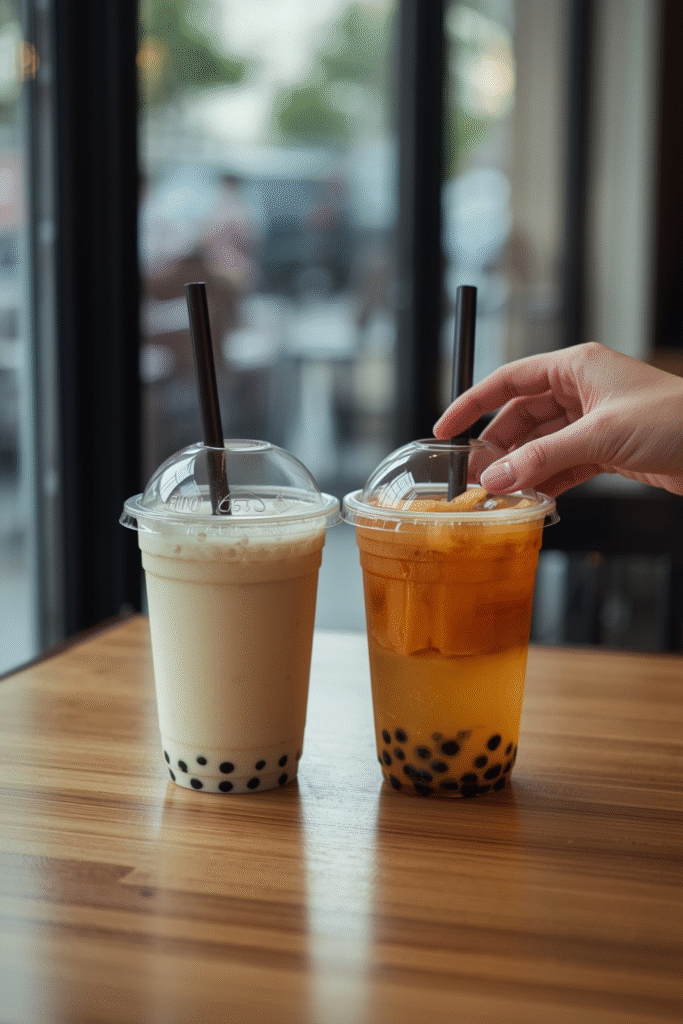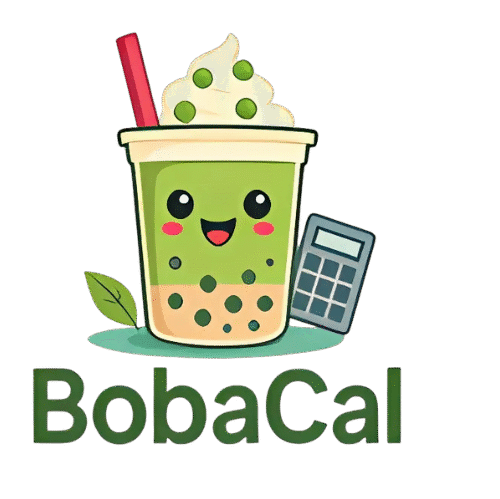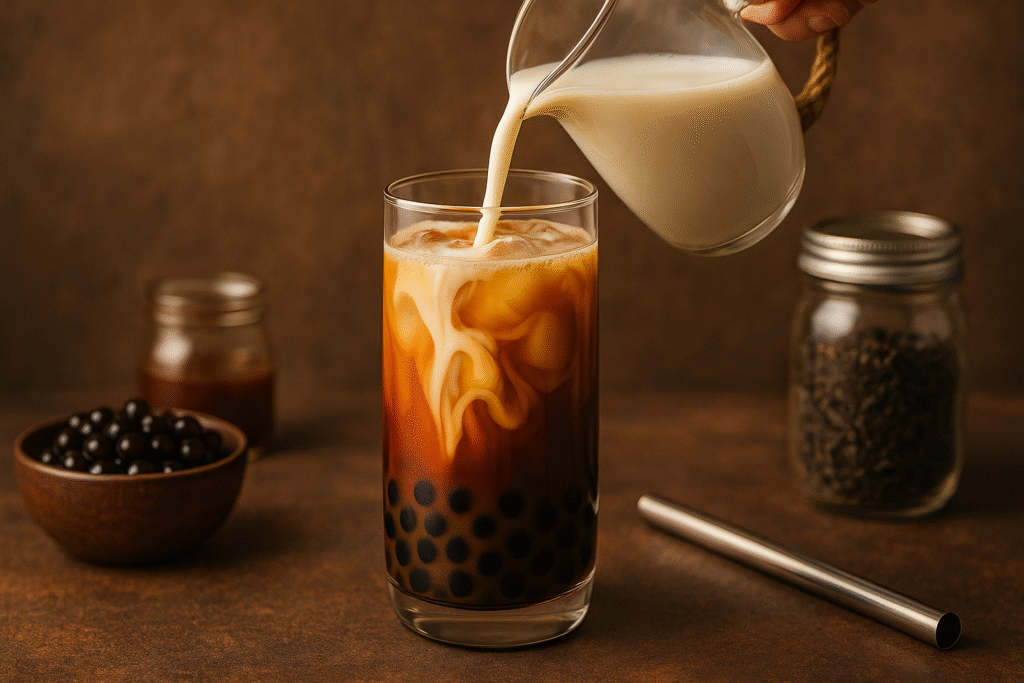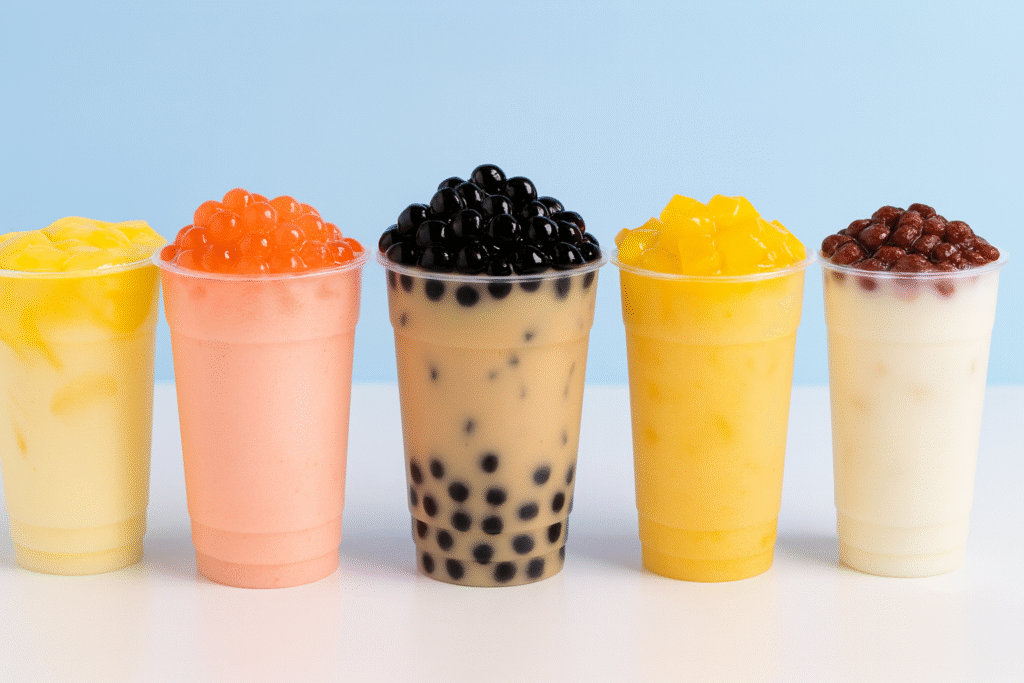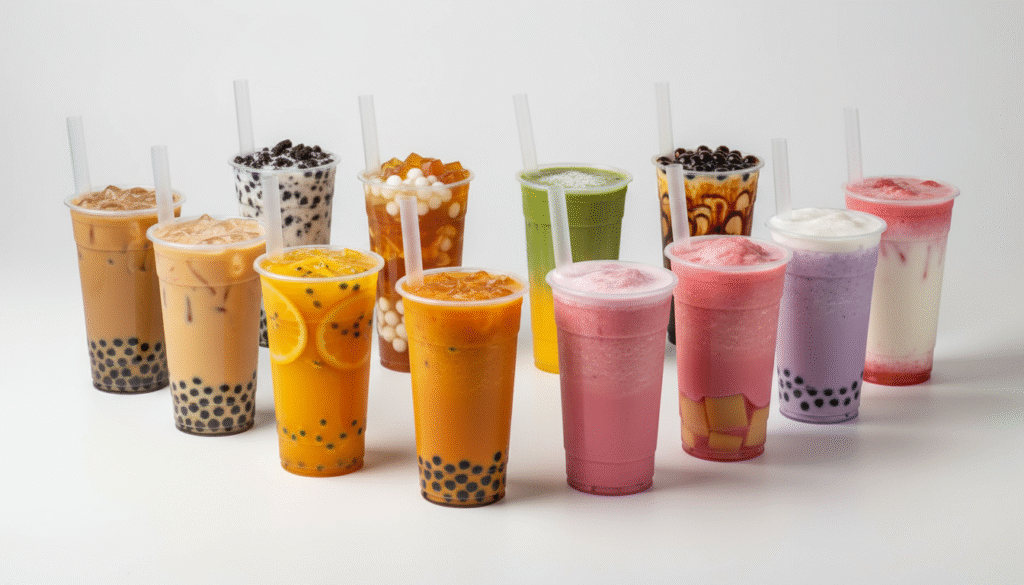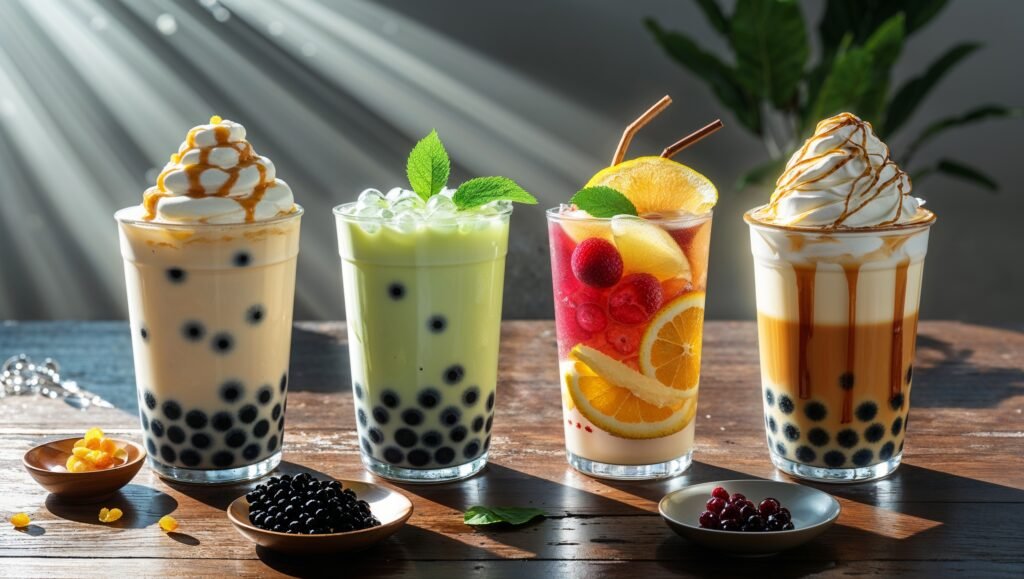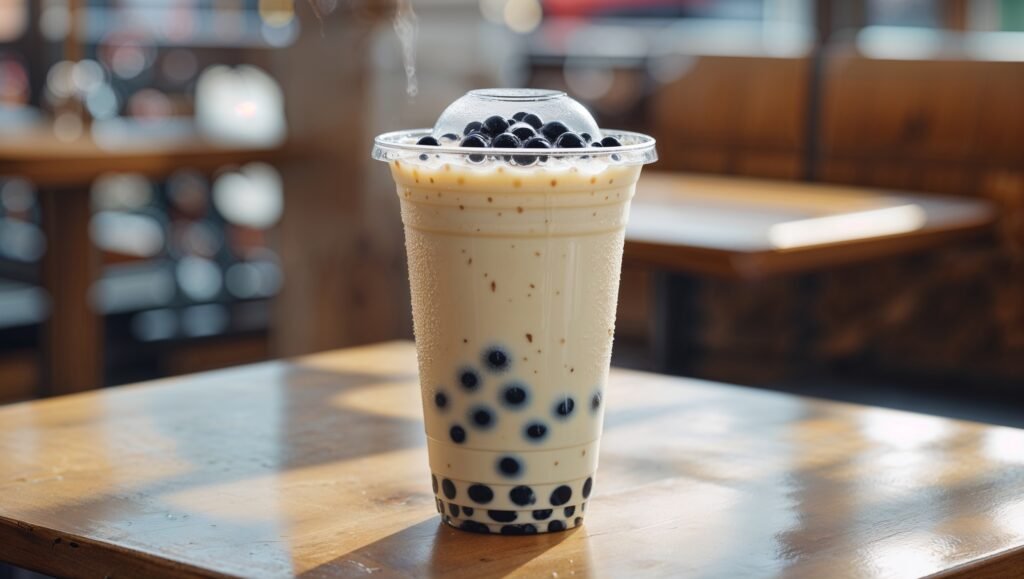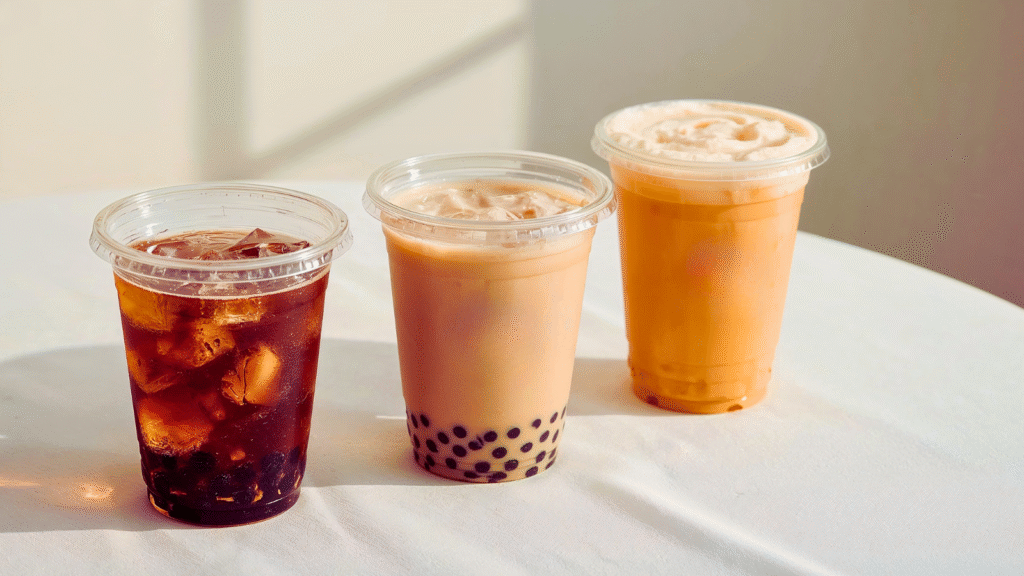What is Bubble Tea? (Boba)
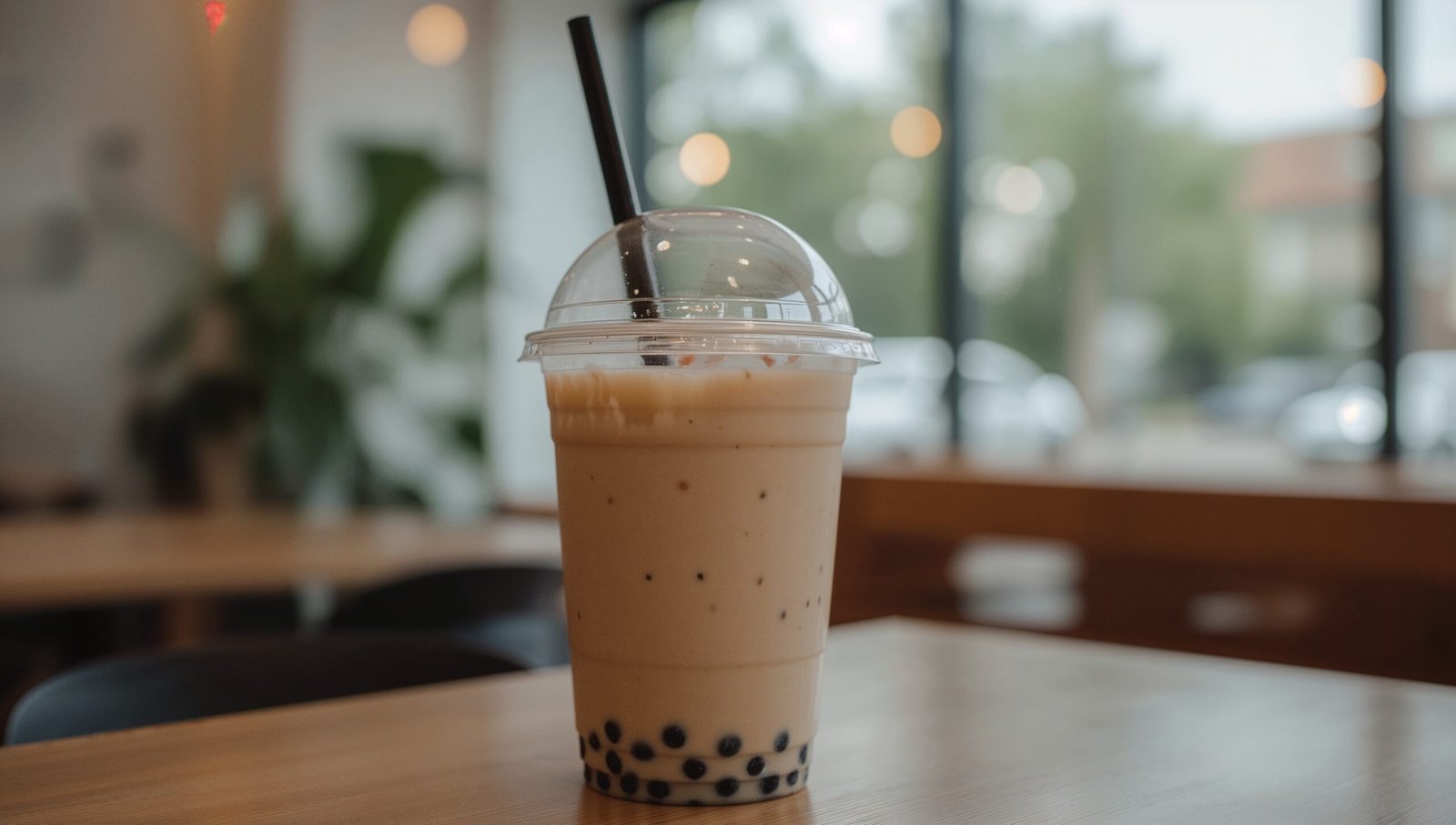
What Goes Into a Classic Bubble Milk Tea
What is bubble Tea? It is a type of tea-based drink—usually black tea, green tea, jasmine green tea, or oolong tea, with milk or fruit, sweetener, ice, and toppings (most commonly tapioca pearls, the chewy spheres better known as boba). What is boba → f you’ve wondered what is boba, it’s simply another name for bubble tea. shaken or blended, and served with a wide straw so that the toppings can fit through the straw, onto your lips, and into your mouth with each sip. This guide breaks down what is bubble tea with realistic estimates and smart swaps.
Quick backstory (don’t worry, there’s no test at the end)
Bubble tea originated in Taiwan in the late 1980s, after tea shop owners began shaking tea with milk, ice, and syrup. At first, the “bubble” in bubble tea referred to the haphazard bubbles that would form on top of the drink when shaken vigorously—today, however, many people refer to the tapioca pearls as “the bubbles.” As the trend swept through East and Southeast Asia and then around the world, many tea shops started making fruit teas, slushes, milk foams, and a kaleidoscope of jellies.
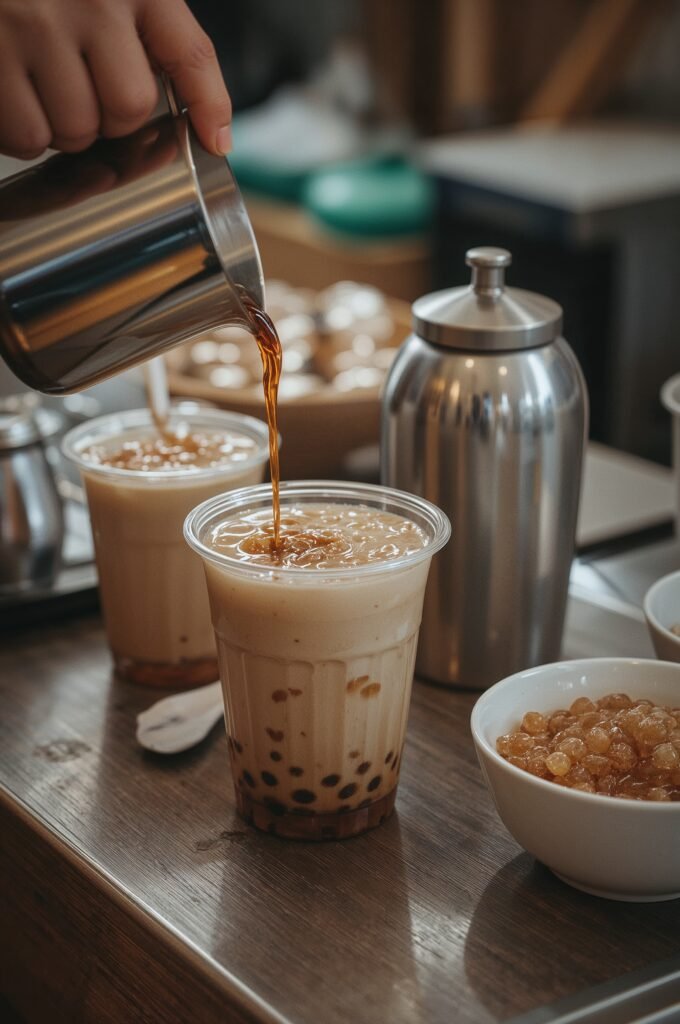
For a wider look at ranges across boba shops, this quick guide to bubble tea calories is a helpful reference.
The 5 Parts of Bubble Tea
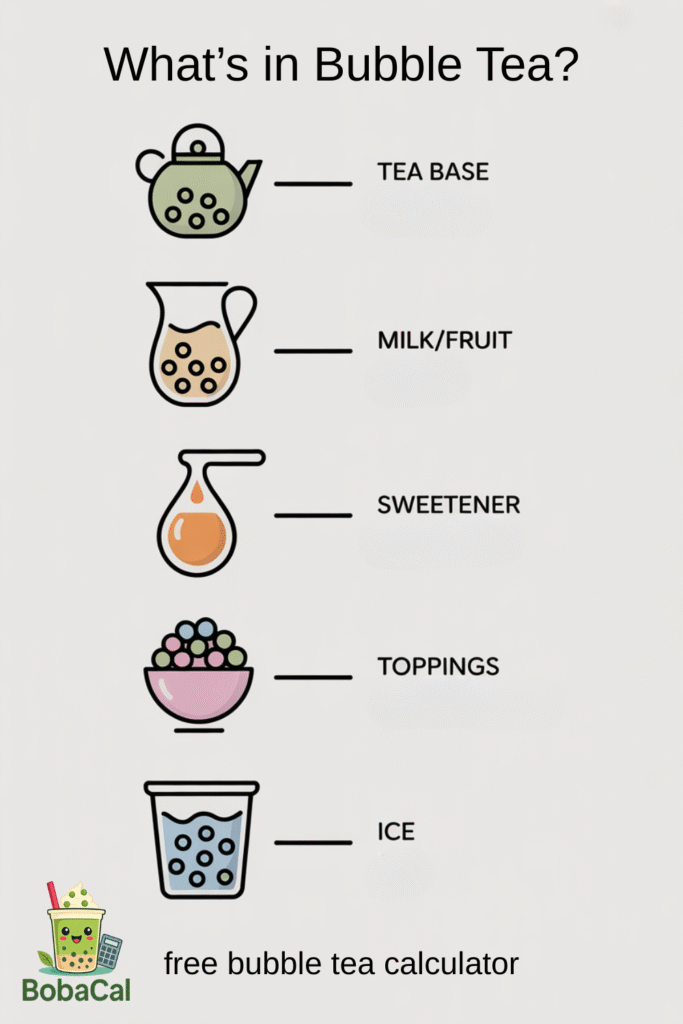
Why People Like Bubble Tea
It’s flavorful and “interactive”—you’re sipping and chewing. It’s also customizable: you might be a 30%-sugar, oat-milk traditionalist or a passion-fruit tea + popping-boba maximalist. The ritual of choosing sugar, milk, and toppings is part of the fun.
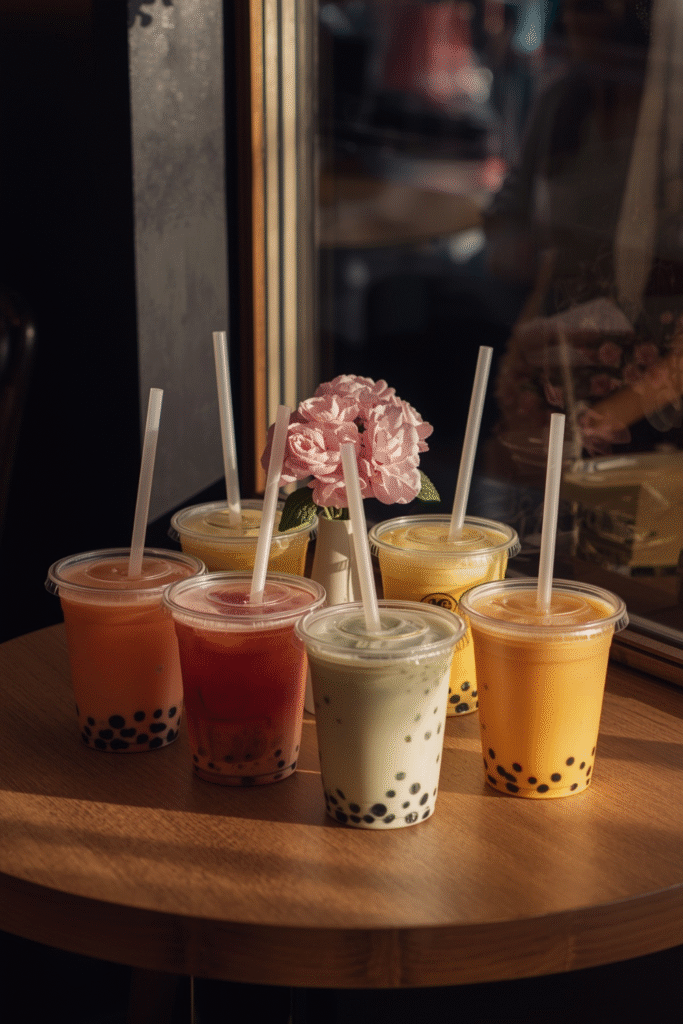
Is Bubble Tea Good or Bad For You?
Short answer: it depends on your selection. A bubble tea can be a light, refreshing tea with a splash of milk and a reasonable amount of sweetness, or can be similarly decadent like a dessert drink featuring syrup level sweeteners, cream caps, and double the toppings. One is not “bad” than the other – just know that bubble tea calories and sugar can vary quite a bit.
Approximate average calorie ranges (realistic, not scary at all)
To understand how sugar level changes totals, see the chart below.
Do you want a precise number for your exact order? build in our free calories and macros calculator.
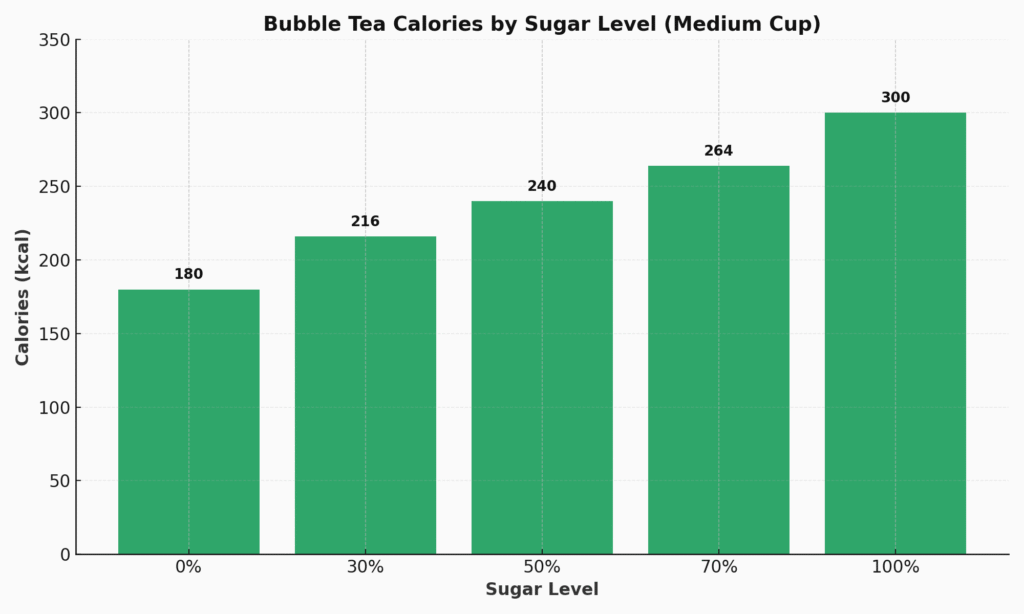
So, is bubble tea healthy?
It can fit a balanced diet when you choose 30–50% sugar, a medium cup, and one topping.
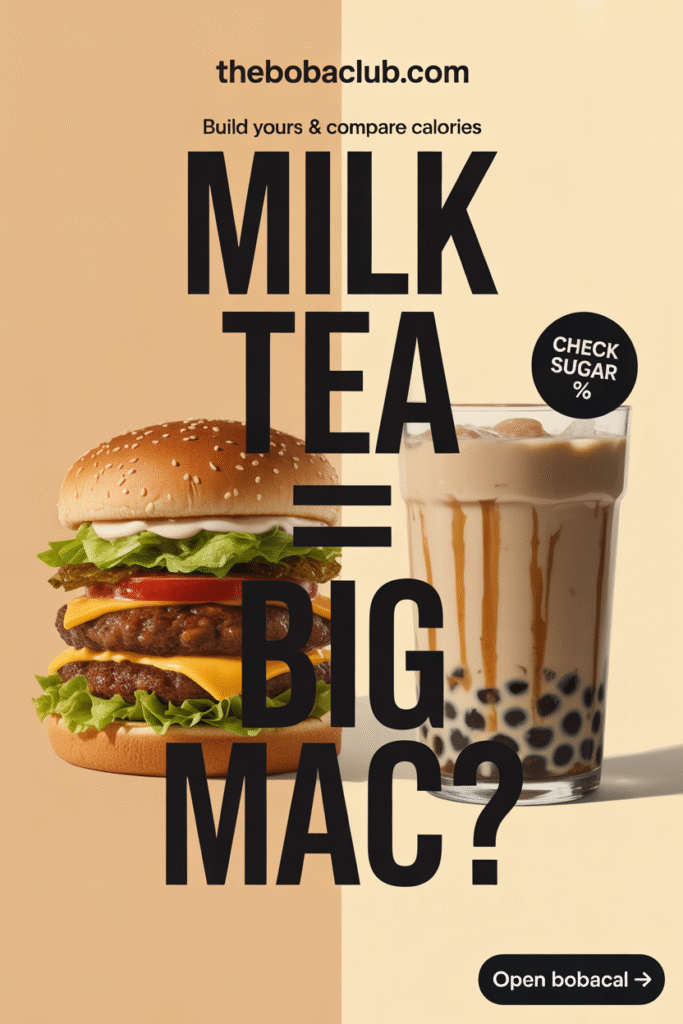
Next step: use the BobaCal calculator to match this chart to your cup size and toppings.
Bubble tea can be your “flirty” afternoon snack, or your “full cheat” meal. The only distinctions is the amount of sugar, size, and toppings.
How Sugar Levels Affect Your Drink
Most stores use the same syrups, depending on the set portion size for the cup. Dropping from 100% sugar to 50% sugar can greatly reduce calories and total sugars. Going to 30% sugar is a great way to keep the same exciting flavor, while reducing sweetness. 0% sugar works only if you want strong tea flavor, or plan to get sweetness from toppings (like brown sugar pearls).
Tea and Milk alternates that impact lighter calories
Toppings: Enjoyable, but choose with intention
Smarter-order swaps (maintain the vibe, lower calorie counts)
Can You Eat Boba?
Yes — absolutely! The “boba” in bubble tea is actually tapioca pearls made from cassava starch! They are boiled into a chewable, sweet edible treat. The texture is everything — a gentle chew gives sipping a rhythm.
What tapioca pearls are (and aren’t)
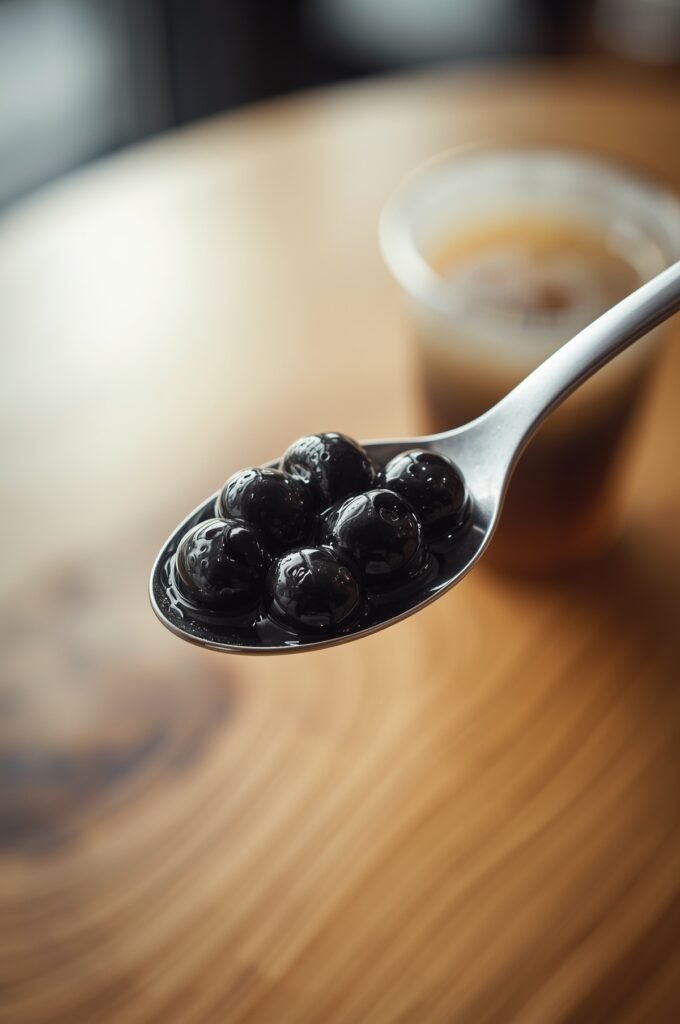
Are bubbles digestible?
Yes. They are starch, not magical beads. In moderation and with water, they digest like other starches.
Who should not have them?
Because of size and chewiness, pearls are not suitable for very small children or anyone with swallowing difficulties. For them, choose jellies or order without pearls.
Calorie views
Pearls equal joy and calories. If you love them, keep them — but balance sugar and size. If you’re indifferent, go with grass jelly or no toppings and enjoy the tea.
What Are Other Names for Bubble Tea?
Wherever you order, you may hear it called bubble tea, boba, pearl milk tea, tapioca milk tea, or the original Mandarin zhen zhu nai cha. Same idea, different name — kind of like a drink with multiple passports.
Regional naming vibe
“Boba” can also precisely mean the pearls; context tells you if it’s the drink or just the topping.
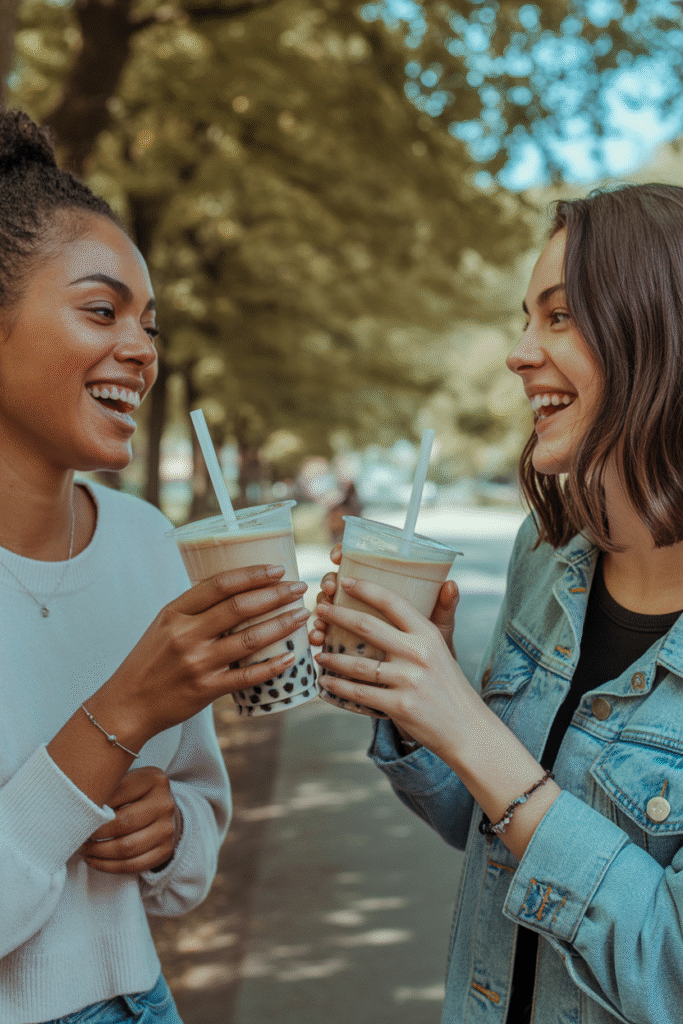
Compare the amount of sugar in our bubble tea calories guide, or you can build your exact order in our quick BobaCal calculator.
Quick Ordering Help (Smart Swaps) ✨
New here? Here’s how to order bubble tea: choose a tea base, pick milk or fruit, set sugar %, choose ice, then add one topping.”
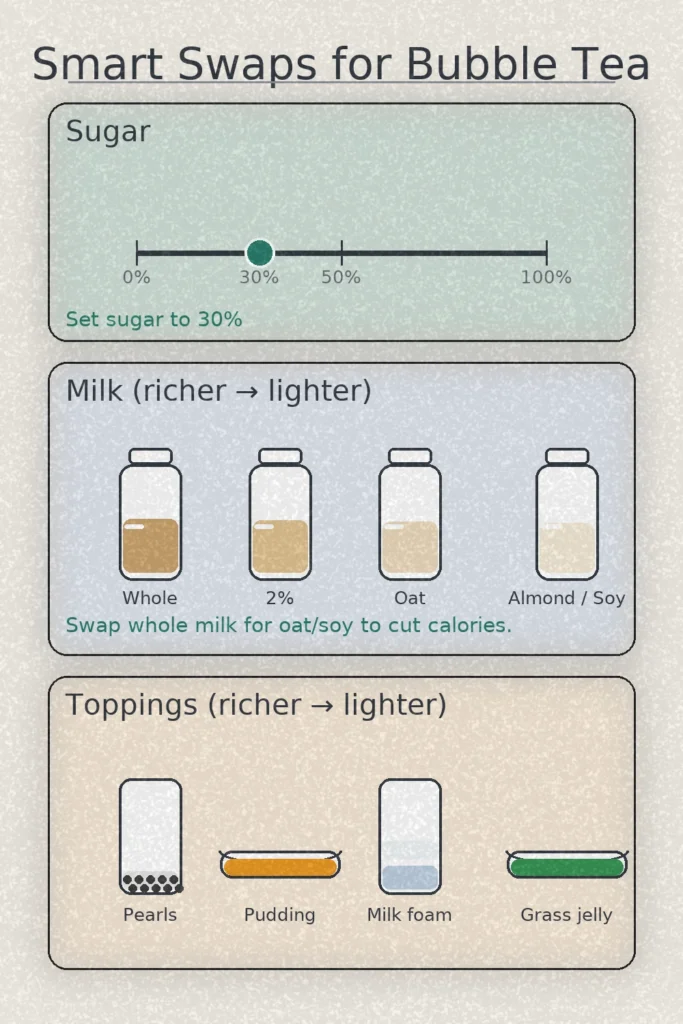
if you love brown sugar drinks, try a lighter version in our Brown Sugar Boba Recipe.
- Sweet tooth: 50% sugar + one topping.
- Light: 30% sugar + low-fat or oat/soy milk + medium size.
- Pearl lover: keep pearls, skip cream cap, stay medium.
- Fruit tea fan: 30–50% sugar; add aloe/jelly in moderation.
- Caffeine-sensitive: choose green/oolong or ask about decaf options.
Frequently Asked Questions About Bubble Tea
What is bubble tea made out of?
Tea (black/green/oolong), milk or fruit, sweetener, ice, and toppings (tapioca pearls, jellies, pudding, cream foam).
Is bubble tea unhealthy?
It can be moderate or indulgent — YOU decide! Medium size, 30–50% sugar, one topping = a balanced treat.
Are bubble teas dairy-free?
They can be. Most shops offer oat, almond, soy, or non-dairy creamer. Some recipes use cow’s milk — check if you need strict dairy-free.
Does bubble tea contain caffeine?
Usually yes, if made with tea. Fruit drinks may still use tea bases. Ask to confirm caffeine-free.
What is the difference between boba and bubble tea?
They’re often used interchangeably. Some use “boba” to mean just the pearls, others mean the whole drink.
Concluding word: What is Bubble Tea?
Now that you know what is bubble tea, think of it as customized tea with character—part drink, part dessert, all personal preference. Want the chewy pleasure of boba without turning your afternoon into a calorie summit? Order the medium size, choose 30–50% sugar, pick one topping you love, and sip away. For brand-specific ranges, check the calories guide, play with the BobaCal calculator, and explore our chain deep dives.
if you’re comparing What is in Bubble tea? across shops, start at 30% sugar and add toppings mindfully.
When you’re ready for more, check out the bubble tea calories guide, play with the BobaCal calculator, and consult the brand-specific guides for more precise ordering.
